Maintaining a garden in a hot climate can be challenging. I’ve done some research, and found a few key landscaping ideas you can use to create a design that won’t just survive, but thrive in the heat.
Some landscaping ideas for hot climates include:
- Add shade in the garden and around the house – especially in full sun and west facing areas
- Take advantage of cooling breezes and focus on improving air circulation
- Reduce hard surfaces – paving, paths, driveways – and use lighter material colours to reduce heat absorption and radiation
- Use sun & drought tolerant plants – natives, desert, succulents, Mediterranean, Australian/ New Zealand/ South African varieties (ensure they’re not weeds!)
- Reduce water intensive plantings & lawns and replace with groundcovers, gravels & mulches
- Use trees to promote natural cooling effects through evapotranspiration
- Position components correctly in your design to allow their strengths to support others
- Align components that suffer evaporation North/South to reduce exposure to the sun
- Paint or otherwise make existing elements lighter colours
- Collect and store water – after rain, from the house, off hardscaped areas (paths, patios) and low points in your site – to use later
- Use water wisely – keep things narrow and deep (but within guidelines), take advantage of cooling breezes near sitting areas, have ways to reduce sun exposure to minimise evaporation
While these ideas work well in isolation, they are even more effective when you combine many into a well thought out landscape design.
Creating a design involves:
- Understanding your site’s microclimate – how to identify your problems and opportunities
- Choosing suitable plants and materials for your environment, ‘look’ and lifestyle
- Placing these elements to address your problems and take advantage of opportunities
- Properly plant your plants and trees to ensure your design is effective
Let’s walk through these steps and look at some good hot climate landscape ideas along the way.
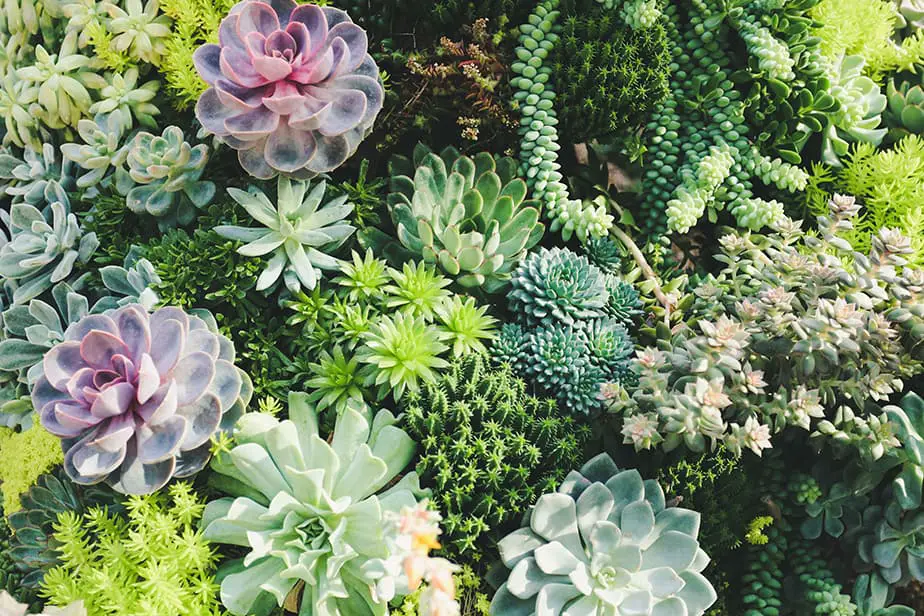
Hot Climate Landscaping – Understanding Your Microclimate
Microclimate refers to little atmospheric regions (pockets around your site) where that climate differs from the surrounding area (your suburb, town, region etc.).
The main conditions to consider are:
- Exposure to sunlight and its intensity
- Exposure to wind and wind strength
- Ambient temperature of the space
- Humidity of the space
These are heavily influenced by:
- Surrounding buildings
- Materials in the space – their colour, ability to absorb and radiate heat and if they absorb water or don’t
- The type of soil – it’s ability to hold water and how close to the water table is
Let’s look at a quick example of different microclimates across a site and then how to note opportunities and problems we’d want to deal with.
Out made up yard faces South – a problem for this Northern Hemisphere house. My simple notes, lines and circles suggest the following:
- The Southern and Western parts of the yard experience more extreme, drier conditions – hot and cold. This is exacerbated by the house reflecting and radiating more heat into these areas
- There is a little space on the Western side of the house that is partially protected but still receives some sunlight – it is likely to be more humid than the rest of the the yard
- There is an open area on the Eastern side of the house that experiences morning and midday sun, but is protected from the afternoon heat. It is also protected from afternoon breezes, which may increase the humidity a touch
- The Northern side of the house is the coolest and calmest – safe to consider some plants or activities you wouldn’t place in full sun
- The lowest point of the yard is the back right corner. It is exposed and windy, but perhaps collects more moisture than other areas
We’ll look at how to use this information to develop a design in the third section. Before that, let’s look at the kinds of traits and characteristics we want to target in our plant, tree and material choices.
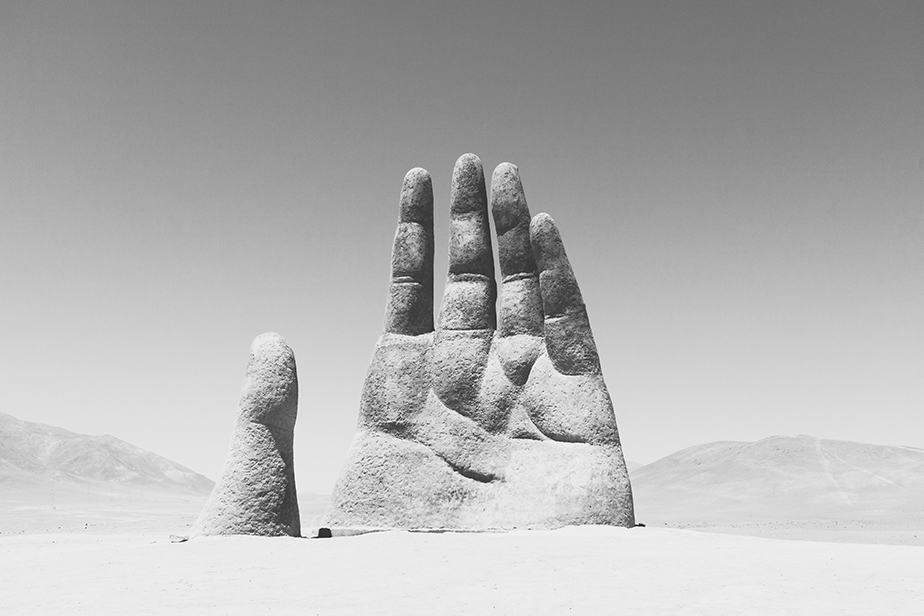
Choosing Materials That Handle The Heat
For this step, the aim is to build a list of plants and materials that can cope with your local environment.
In the next section we’ll see how to position components (physical things like trees, paths, walls and garden beds) to handle the problems and opportunities outlined above.
But for now you want to limit your plant and material choices to things you know will handle the conditions.
You also want to find good trees and climbing plants like vines. They are key in both providing shade and actively cooling the garden and the house.
Trees are vital in cooling spaces through their process of ‘transpiration’. This is the tree ‘breathing‘ – where it draws water through it’s roots and body up to it’s leaves. It then undergoes a ‘gas exchange’ receiving oxygen and releasing water as part of the photosynthetic process.
Water is released as gas/vapour – a process that requires ‘heat’ (energy). A water molecule uses this energy to turn to gas, taking this ‘heat’ with it as it leaves, thereby cooling the surface it left – and the surrounding air.
This list building process can take a little research, but there are many resources available online that will focus on your specific growing Zone or region.
Talking to a local expert is even better, as they can suggest combinations and methods to help things grow and/or weather well with minimal maintenance.
Plants
For plants you want to ensure:
- They tolerate partial or full sun
- They tolerate drought conditions
- Can handle periodic inundation – if your area experiences irregular rain
- You find a few plants that grow well in raised beds, pots and containers – for added utility
The best plant and tree options will be:
- Native plants
- Desert plants (xerophytic plants) like succulents including cacti
- Mediterranean plants
- Australian, New Zealand & South African plants
- ‘C4’ plants – those that use the C4 photosynthetic method which results in less water lost to transpiration than alternatives (many of these probably fall into the above categories, but worth asking an expert about if you’re in a very dry area)
It’s useful to note not only their growing requirements but if they flower, drops seeds, branches or other material that may require additional maintenance.
Always check with your council or a local expert if non-indigenous plants are classified as weeds or otherwise prohibited in your area.
Materials
If you can, a good goal is to reduce the amount of ‘hardscaping’ across your site. This means reducing large expanses of non-porous materials like concrete, asphalt, paving, timber decking and brick.
You can use these materials, but there are a few tricks to making them work more effectively in a hot climate. We’ll touch on some of these in the next designing section.
Some things to target and think about when choosing materials include:
- Choose lighter colours – they absorb less energy and radiate less heat back into the space across the day
- Paint existing surfaces lighter colours to reduce existing heat levels
- Use porous materials like pervious concrete or porous paving in place of the normal options (although I’m unsure how economically friendly they will prove to be, but I guess they can’t be worse than concrete)
- Alternatively, have normal paving or bricks but use gravel, groundcovers or low grasses in between instead of mortar – this allows water to flow into the gaps and return to the soil
- For larger yards, make use of rocks, stones and boulders to cover ground instead of, or in combination with, suitable plans – this will reduce watering requirements
- Additionally, use mulch around plantings to reduce soil evaporation – gravel and rocks work well as they somewhat ‘mimic’ the environment many drought tolerant plants evolved in
- Don’t be afraid to alter your existing ground conditions.
- Changing slopes, high and low points, and even digging into the ground a little, allows you to address problems fairly directly
- It also allows you to create beneficial conditions and microclimates that can support new opportunities
- Don’t be scared to use water in certain situations – it’s a great way to add passive cooling to a space, especially if positioned to take advantage of breezes
- Use items like sculptures, screens, upright poles/totems, shrines, trellises, gates, fences, arbors and old recycled materials as visual ‘feature’ elements rather than plants – this will reduce watering requirements even further
You have more leeway with material selection than plants, but it is still important to follow the points above when designing a garden for hot climates, as we’ll see next.
Placing Components– Garden Design Tips For Hot Climates
When it comes to designing a garden capable of handling a hot climate, it makes sense to try and ‘fix’ some of the difficulties first and then add some ‘flavour’ later.
I outlined some problems in my example above, so let’s explore a few different approaches to address them.
Reducing Direct Sunlight & Heat
My first sketch looks at quick wins to reduce the heat the ground receives – from direct sunlight and radiant heat from the house. We do this through:
- Painting the walls lighter
- Spacing the solid materials – like paving stones – apart and using gravel or greenery as the mortar
- Opt for rockeries – areas of boulders, rocks and plantings – in exposed areas
- Not strictly a heat reduction move, but something that developed as this exploration happened – I looked to direct and collect water at site low points (back corners) and store there or pump to tanks elsewhere for later use
- For out-of-sight areas, use gravel or other non-plant materials to reduce overall maintenance and water requirements
While these are useful tips to reduce heat as it hits the house and ground, we can do more with other plants and materials.
Adding Shading Components
This plan looked at other ways to provide additional shade to the space. Some include:
- Planting trees to reduce sunlight onto the house and ground – tallers trees that cover the roof cool the house further, but need to be planted further away in general
- Building verandahs, patios or pergolas over sitting or entertaining areas – adding climbing plants for additional shade if needed
- Add trellises along the Western and Southern house walls and cloak with climbing plants to minimise direct sunlight onto the house
- Use walls to create protection and shade and reflect heat away from prime positions
- Moving common areas – like entertaining spaces – to less exposed positions, so they require less resources and protection
- Use screens, panels, poles or have gaps in walls to provide shelter from the sun but still allow breezes through
These ideas are more expensive, but in most cases more effective at providing shade and protection, not to mention the passive cooling from things like trees.
I mentioned right at the top the power of many of these ideas is how they can work in combination with others. To provide protection, reduce the overall heat of the garden and be smart in how they use water.
Cut & Fill – Changing The Ground Conditions
Cutting from the Eastern side of the yard lowers that space. With adequate shade, it may be able to support higher maintenance plants, such as a vegetable garden or lawn. Running this in a North/South orientation should help further reduce evaporation.
The consensus is to minimise lawn and replace it with suitable plants, but I know some people really like having a small area of grass for children or pets. At least following some of these kinds of tips should help keep it manageable and more water conscious.
The brown areas are raised mounds with rockeries on the Southern side, taking the full brunt of the sun and heat.
The leeward side contains a depression at the base, where trees and groundcovers can be planted. This offers a little more protection from soil evaporation, and will collect water runoff for the trees.
They then help shade the house, entertaining area (including pergola) and footpath. The latter two would also be designed similar to the prior sketch – pavers spaced apart with permeable surface between them.
I also looked at lowering the entertaining area a few feet into the ground. I’m not 100% sure if this would reduce the heat – in theory it’s cooler underground, but it might also lead to a more stagnant space where heat sits.
I’m not sure, but an interesting concept.
A final idea could be to add a narrow, relatively deep water feature around the entertaining area. Having it West/South of it should help passively cool the space as breezes pass over it.
A neat way to combine feature and storage.
Design Sketch 1 – Conventional Layout
The previous explorations focused on specific combinations and techniques to reduce heat. This one looks more at the overall layout of the garden.
I note two ‘feature’ spots for things like sitting spaces, a lawn, a veggie garden or a sunken ‘fernery’ or garden bed. Having a low channel or valley that is partially covered (like a tree canopy) can increase the humidity and support a greater variety of plants.
You can see feature area 1 is, again, on the Eastern side where it has some protection from wind and afternoon sun – better supporting these activities.
A third feature area sits off the entertaining space, and they could be a water feature, garden bed or non-desert feature trees. This will be shaded in some way as well.
I opt to put a path close to the house, and have some form of shading on the ‘outside’. Depending on my conditions and funds, I could opt for mounds/berms, trees, rockeries, walls or screens.
The final piece is to put low maintenance materials like gravel or suitable groundcovers in the areas out of sight.
Design Sketch 2 – More Natural Curve
Like above, this plan explores an overall garden layout. I wanted to try something completely different to the straight lines of above.
I opted for trellises and climbers to reduce the heat onto the house. The Western space can remain a feature garden bed like a fernery.
I moved the entertaining space to the better protected Eastern side. Directly South of it I created the main features area. Normally it would be exposed to sun and wind, but here I’d opt to provide good shading trees.
I switched the path and low maintenance garden. They sit next to the house, reducing direct heat further. The path now curves, just for something different – I’d refine it further later.
The big additions here are a series of walls on the Southern side of the path. They have spaces between them to allow water to drain, and plants and breezes to flow through.
Two larger berms/mounds of earth fill the rest of the backyard – home to rockeries with groundcovers and offering protection on the leeward side.
So this collection of plans and explorations should give you an idea of how you can position areas in your garden design, and how you can place and combine components to ensure everything can handle the heat.
The last thing to quickly touch on is the importance of correctly installing materials, particularly plants.

Proper Planting Techniques For A Hot Climate Garden
Even the perfect design will mean little if you don’t give your materials, and particularly your plants, the right starting conditions.
Here are some great tips you can follow when planting to ensure they adapt and grow well in your climate:
- Start with smaller plants rather than larger – this allows them to adapt to the local conditions. It is also likely to be cheaper, but will take a little longer for the garden to fill out
- Break up soil/ rock when planting and evenly spread suitable manure/ compost etc.
- Water your plants infrequently but heavily to encourage the roots to dig deeper
- Opt for drip irrigation rather than sprinklers to reduce water lost to evaporation
- If your garden bed has plants with different growing needs, group those with similar needs together so they’re easier to care for and more likely to succeed
- Water in the early morning to allow water to soak into the roots, reducing water loss from evaporation – it also gives them some water to survive the heat of the day, and allows them dry off before night, preventing potential fungal infections
- Groundcovers, as mentioned, help quickly cover the ground, reducing weeds and the surface temperature of the soil – helpful all round
- If you want to add height to a space without waiting years or buying a mature plant, incorporate pots, containers and raised garden beds
- When using these, group things close together where possible to reduce evaporation and moisture requirements
Even with these tips, I still recommend talking to local experts to help you properly install and care for your various plants. Not just your more specialty plants that require more care, but even your heat and drought tolerant choices.
And that’s it for today’s post. I hope you enjoyed the exploration of how to analyse your site, research suitable plants and materials, develop designs to incorporate them and finally some tips on how to plant them properly.
If you have any comments or perhaps your own thoughts on how to create a garden design suitable for hot climates, let me know down below!


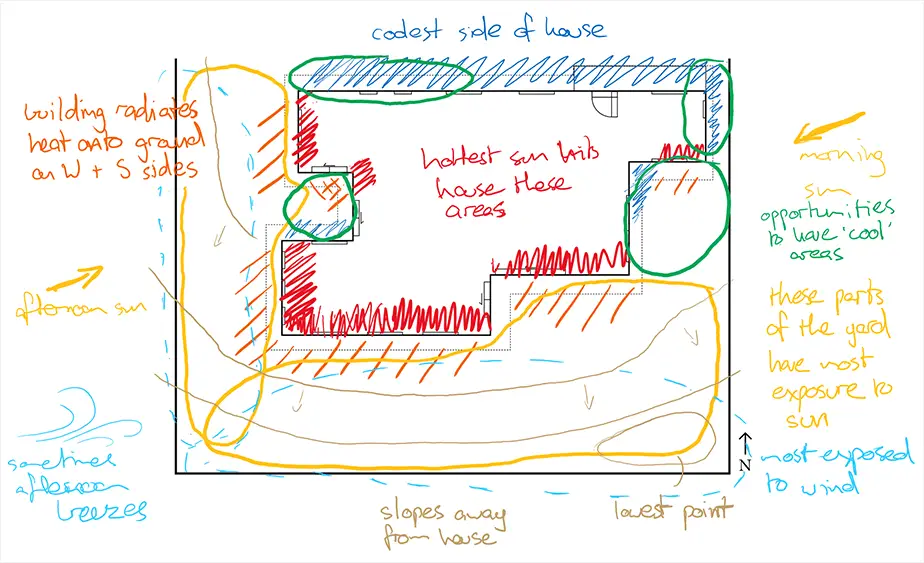

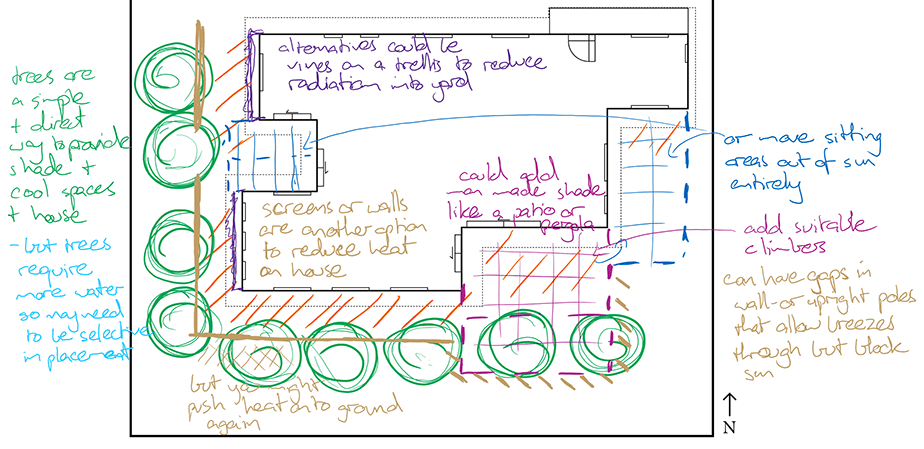

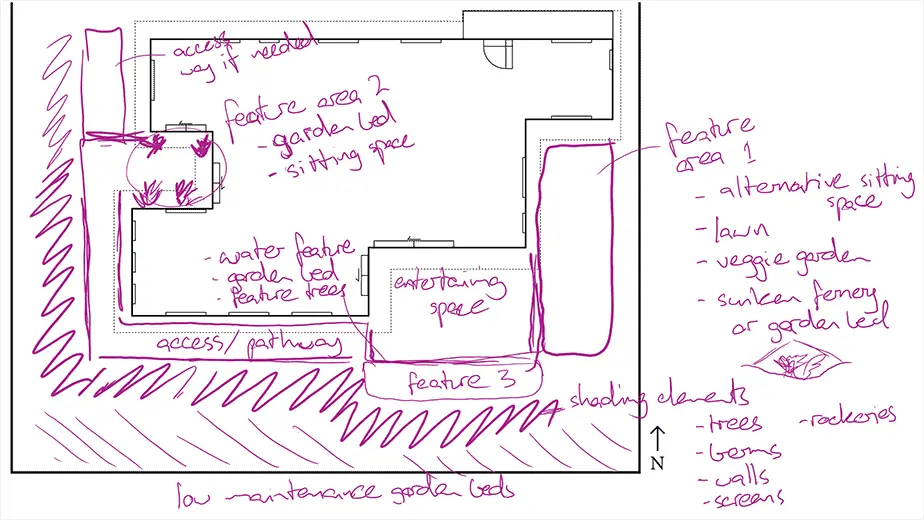
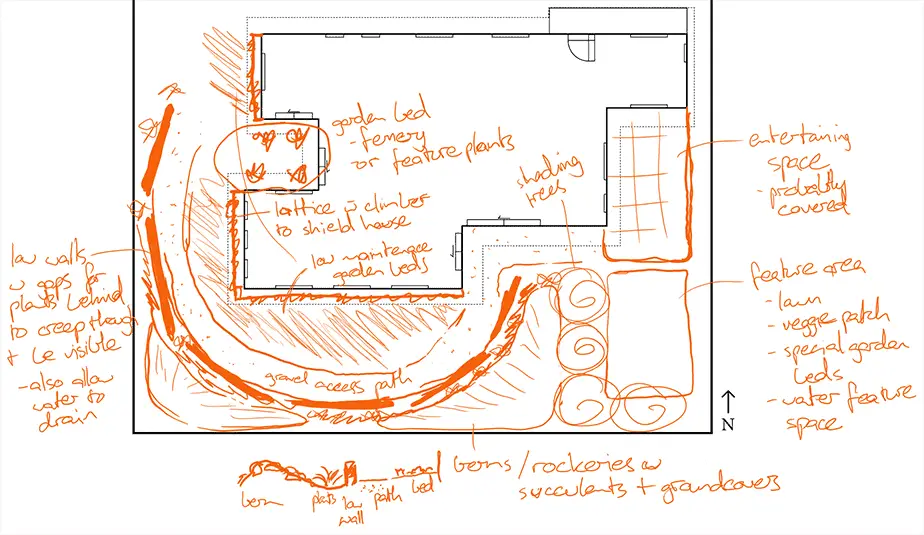
I like that you mentioned that striving to have a low-maintenance garden is one of the best ways to be able to manage the outside of my home. I’d like to know more about where I could find landscape material supply services someday because I’m interested in having a gazebo in the middle of my garden. As such, it would be important to change up the landscaping outside my home to accommodate for that.
https://www.aptopsoil.com/